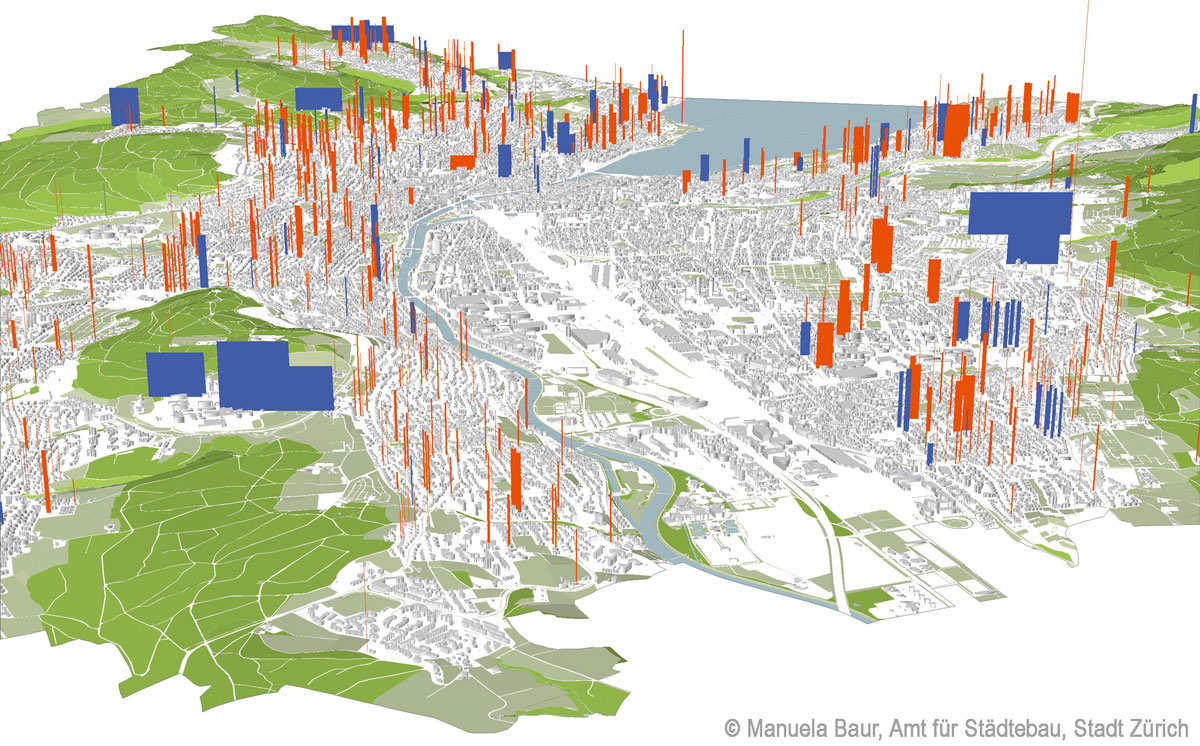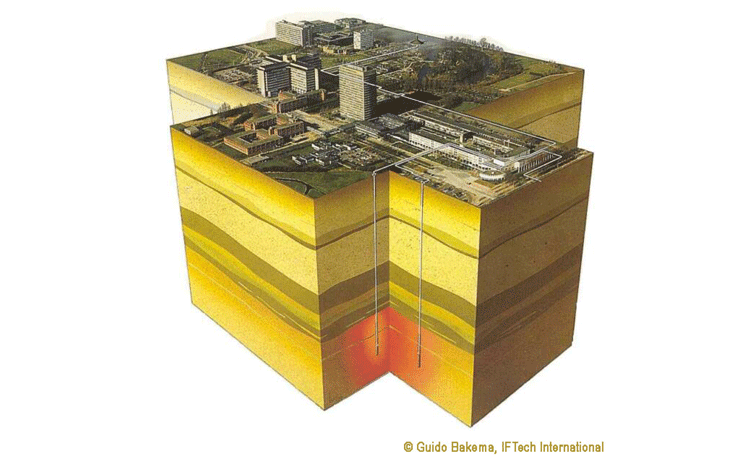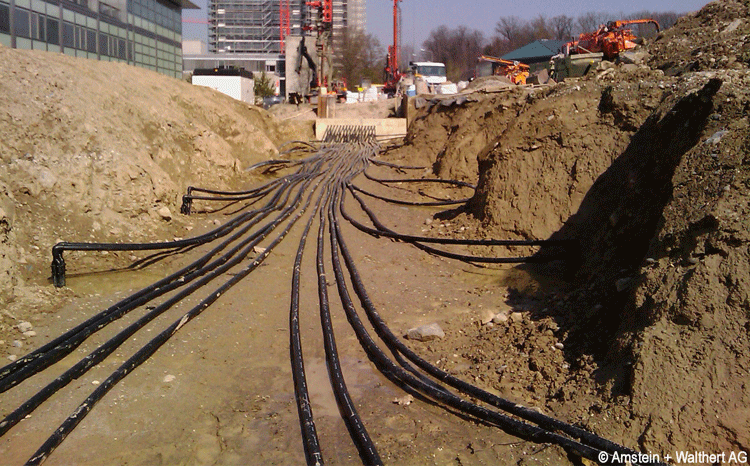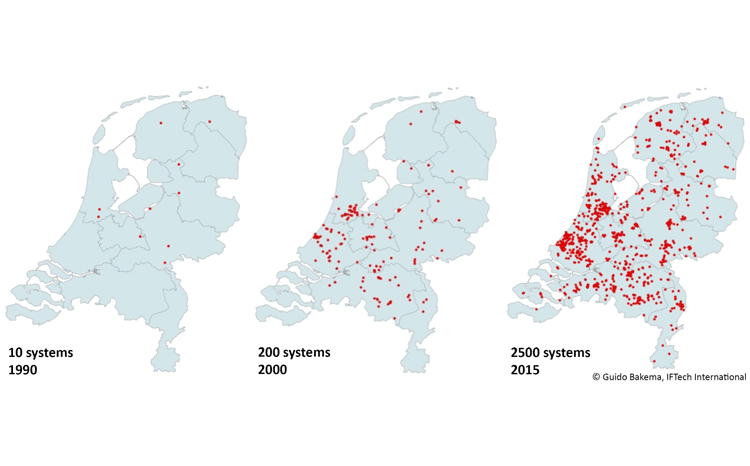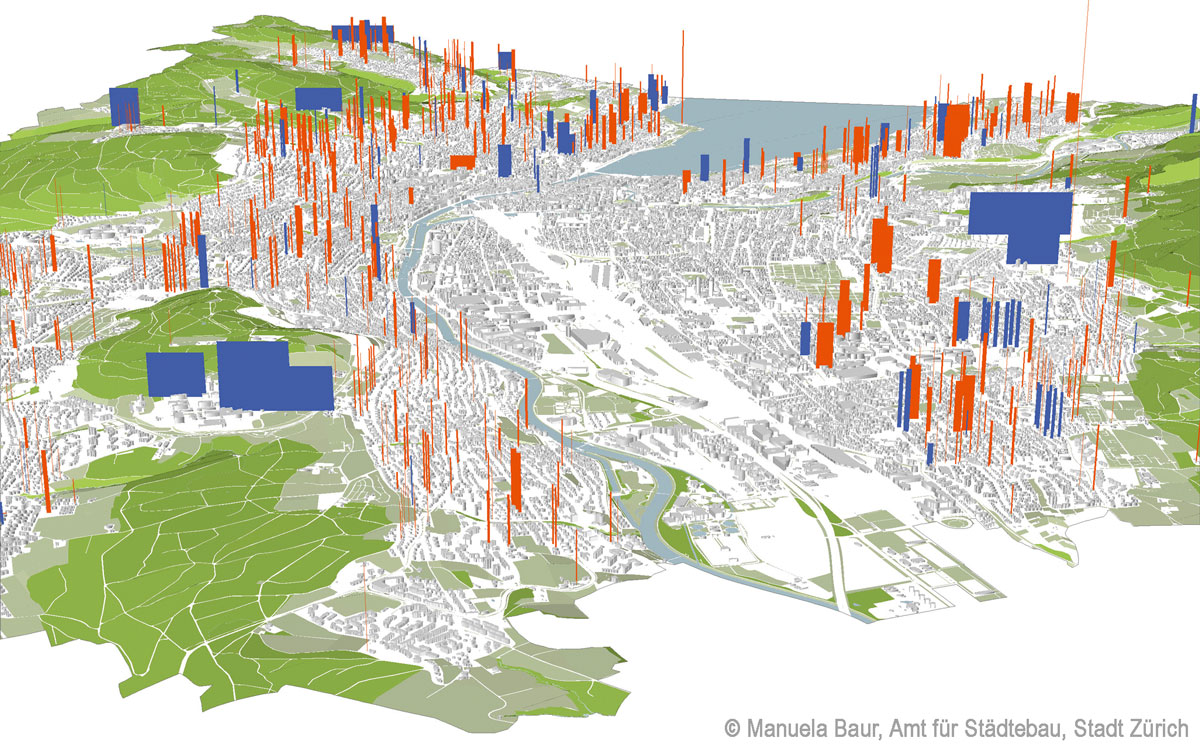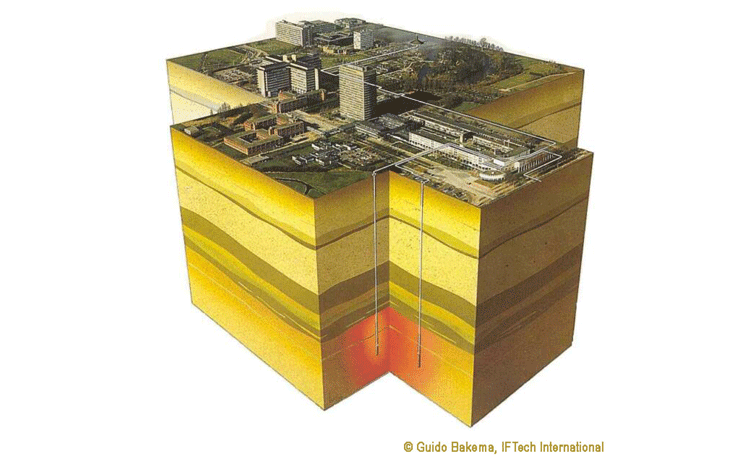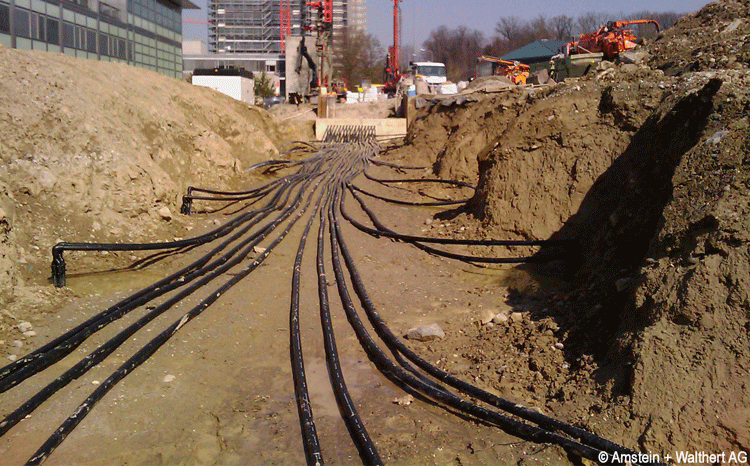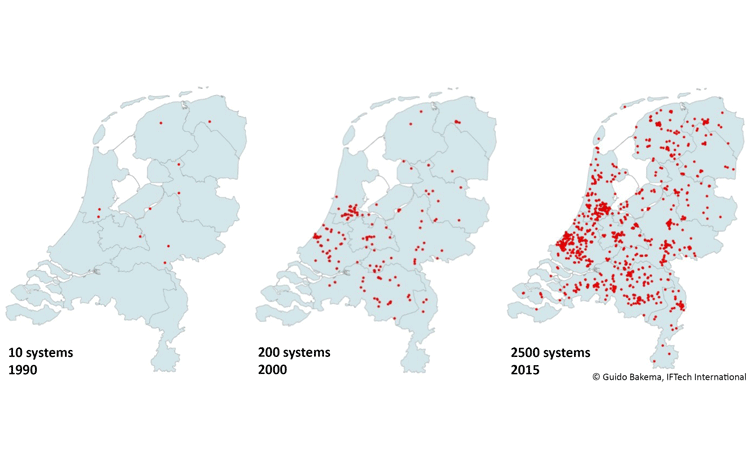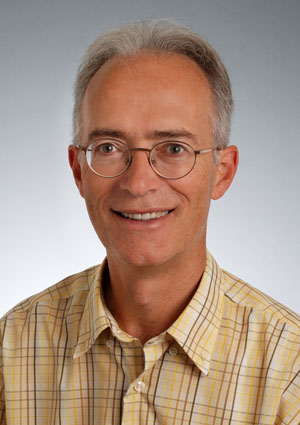Geothermal storage for our cities

22 December 2016 - by Ueli Wieland
For thirty years, geothermal probes and heat pumps have provided an effective alternative for heating houses with oil. Switzerland is a frontrunner in this field. I have used a geothermal probe at home for seven years and had nothing but good experiences. Despite their success, the sales of geothermal probes have stagnated for the first time since 2015. This is due to the interference of multiple probes in close proximity. So what now?
Too densely spaced geothermal probes must be actively regenerated
I was in Grindelwald over the weekend and enjoyed the warm sunshine, which reached a heat flow of 250 Watts per square meter. In summer, values can reach upwards of 1350 W/m2. I couldn’t sense any heat coming from the earth, which, by contrast, only produces around 0.09 W/m2. The thermal conduction of the earthly soil is very poor, causing heat to merely creep, not flow, to the surface.
But thanks to geothermal probes and heat pumps, it’s possible for heat to flow directly from the subsurface to houses. However, this doesn’t work in densely populated areas, as neighboring geothermal probes interfere with each other and will cool down over time. As a consequence, they must be actively regenerated. In the most simple case, the same system is used to cool the house in summer, directing excess heat back into the underground. While brilliantly simple, it’s not very effective. In the most efficient case, heat can be recharged by excess solar energy, collected from the roofs of the houses. A single family house requires only a few square meters, but densely populated cities require too large solar panel surface areas. Therefore, we must search for a better solution.
The following first conclusions can be drawn:
- A geothermal probe will suffice for a detached house.
- In loosely built communities of single family houses geothermal probes should actively be regenerated using solar panels.
- Densely built areas are not well suited for geothermal probes. But if river or lake water is available, a low-temperature district heating grid can be used. With this, houses are heated with water-water heat pumps.
Seasonal geothermal storage for large areas and districts
Geothermal probes not only extract energy, but can also store it for future use by putting heat into the ground and withdrawing it later. The denser the placement of geothermal probes, the more efficient the storage becomes, reaching an efficiency of up to 70 %. There already exist several such storage systems in Switzerland.
On the Hönggerberg campus of ETH Zurich, 425 geothermal probes store waste heat from server rooms and laboratories 200 meters below the surface (read more here). The concept of seasonal storage with geothermal probe fields is ideal when built underneath new building developments.
On the contrary, the Paris Basin has shown us for many years how an existing urban area can reach independency on oil and gas. Warm water from a water-bearing layer is pumped to the surface and fed through a heat exchanger, thereby supplying heat for a district heating system. Afterwards, the cooled water is reinjected into the subsurface, where it is reheated by the earth (read more here).
Shallow rock layers may also be used for seasonal geothermal storage with moderate temperatures (up to 50 to 70 degrees Celsius), provided they have large permeability and aren’t too thick. Additionally, the ground water must not be used for drinking water and should only have low flow rates. Heat can be supplied by waste heat from industry and refuse incinerators or, hopefully in the future, by petrothermal geothermal power plants. 2500 such geothermal storage devices in the Netherlands have already been installed from 20 to 300 meters underground and are used to heat houses.
The Canton of Geneva is confident that its Molasse Basin is well suited for geothermal heat storage and hot water extraction. The Geothermie2020 project was initiated for the planning and implementation of this concept. With this in mind, the Competence Center SCCER-SoE and the University of Geneva are working together to find suitable locations through geologic analyses and simulation.
We have reached our second set of conclusions:
- Densely built cities should be analyzed to determine whether shallow water-bearing layers may be used for geothermal storage.
- New areas under construction should install geothermal probe fields for seasonal thermal storage.
Outlook
Heating with nonrenewable oil and gas can be replaced with geothermal heat. As usual, the solution doesn’t lie in just one technology: depending on how densely built a city is and the type of subsurface, various technologies may be used to deliver this heat.
New wells will be drilled in Switzerland in the coming years which will show whether deep reservoirs are permeable enough for economical extraction of hot water, similar to the area near Munich (read more here). Better understanding of the mid-deep subsurface will help to identify optimal geologic layers for seasonal heat storage. Additionally, the SCCER-SoE and industry partners have planned tests for high temperature heat storage in petrothermal reservoirs, which do not depend on the presence of water-bearing layers.

